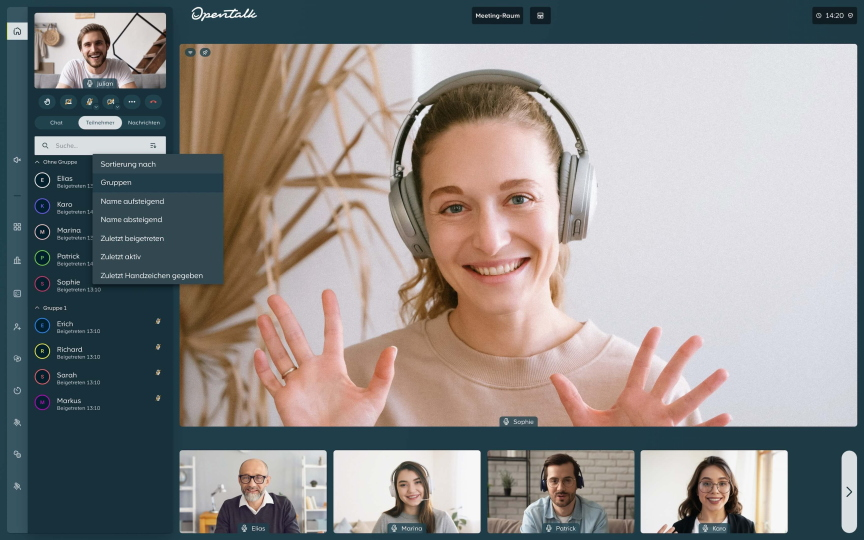German University of Greifswald simulates Audimax lecture with 300 participants

Load tests of videoconferencing solutions are part of everyday life for Dr. Gordon Grubert, Head of IT at the University of Greifswald. With the hot water cooled "High Performance Compute" ("HPC") cluster, which has about 8000 CPU cores and about 5 Tbyte RAM, the university computing center simulates stress tests and usage scenarios with several hundred or thousand video conference participants in all variants.
Last week, he and his team put OpenTalk under fire - and were pleasantly surprised: "I wouldn't have thought that OpenTalk would perform so well. Some of the results were significantly better than at other conferences we have tested in the past," said a delighted Dr. Gordon Grubert afterwards.
Among other things, he simulated a typical very large university lecture, the "Audimax scenario": 10 active participants with camera and sound, plus 300 passive participants just listening. No limit was reached in this test. The Audimax scenario ran smoothly with OpenTalk in the simulated test, although some of the most recently implemented optimizations were not even included on the test platform. "If OpenTalk fixes a few more minor problems, it should be ready for use in our teaching operations," says Dr. Gordon Grubert.
In the usage scenario "All participants take part with activated camera and microphone", minor disruptive effects occurred from around 70 participants. "However, we are quite satisfied with this," is how OpenTalk architect Dennis Kalbhen assesses this. "Because for our tests, we intentionally simulated unrealistically high video resolutions for all participants in order to provoke precisely these load effects and bottlenecks. This also gave us some approaches for further improvements."
In practice, significantly higher numbers of participants are already possible with the usual video resolutions actually received. Measuring this more precisely will be the subject of the next series of simulations by the University of Greifswald. These tests will be addressed when the latest improvements have been incorporated into the test platform.
Basically, OpenTalk scales particularly flat and resource-efficiently due to its architecture, is designed to run large conferences with cameras activated throughout, and also enables providers and platform operators to run a high number of conference rooms simultaneously on the servers. "We're continuing to optimize, but already it's possible to get a lot more out of it with more resource-efficient configurations," says Dennis Kalbhen.
Dr. Gordon Grubert is staying on the ball and will continue to support our OpenTalk team with tests and simulations on his HPC cluster: "We are currently using a whole zoo of different solutions. If the optimizations we find still flow into OpenTalk, it would be my pleasure to finally be able to consolidate everything onto one platform."
Translated with www.DeepL.com/Translator (free version)
More articles
Improved accessibility and greater transparency: OpenTalk 25.4.0
The OpenTalk update offers noticeable improvements in user experience, error transparency and technical security.
OpenTalk 2025: Progress, functions and digital sovereignty
Our open-source video conferencing solution has undergone technical enhancements, gained new features for professional users, and further strengthened the digital sovereignty of businesses and public authorities.